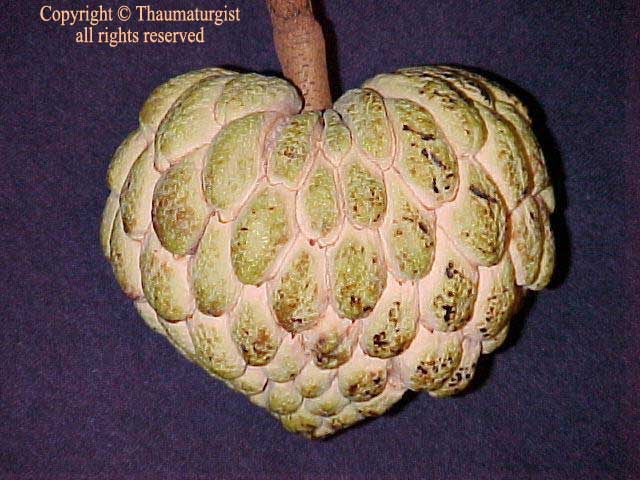
-
МјРЇСІИёСЖШИМі
-
 Malacañang Palace-Official Residence of the Pres
Malacañang Palace-Official Residence of the Pres 138,892
138,892 -
 Amana Water Park
Amana Water Park 115,405
115,405 -
 IFUGAO TRIBE
IFUGAO TRIBE 109,389
109,389 -
 Santacruzan-The Queen of all Filipino Festivals109,274
Santacruzan-The Queen of all Filipino Festivals109,274 -
 Water Refilling Station: an alternative source of drink107,170
Water Refilling Station: an alternative source of drink107,170 -
 LAMBANOG-THE POOR MAN\'S DRINK104,518
LAMBANOG-THE POOR MAN\'S DRINK104,518 -
 Christmas Parol [lantern in English]104,362
Christmas Parol [lantern in English]104,362 -
 HANGING RICE97,037
HANGING RICE97,037 -
 Taoist Temple93,997
Taoist Temple93,997 -
 Corn Fields in the Philippines90,471
Corn Fields in the Philippines90,471
The sugar-apple is the fruit of the Annona squamosa, a tree cultivated throughout tropical and subtropical regions around the world. It is a popular fruit, especially throughout Central America, South America and the Caribbean, and it can be used in fruit salads, smoothies, shakes or ice cream. Sugar-apples have a distinct aroma and a sweet flavor similar to custard. They have a knobby texture similar to pine cones and typically are 2-4 inches (5–10 cm) in diameter with a thick, greenish-gray skin. Cutting through the skin of the sugar-apple reveals the fruitЁЏs white or pale yellow segments, many of which bear 20 to 40 dark seeds that are toxic and cannot be eaten, although some varieties are seedless.
Spanish merchants are believed to be responsible for spreading the sugar-apple around the world in the late 16th and early 17th centuries. The original native home of the sugar-apple is unknown, but it is believed to come from the Caribbean. Sugar-apples are buoyant, and it is likely that this further contributed to the fruitЁЏs global spread. Over the years, the fruit has been cultivated throughout tropical and near tropical regions around the world. Sugar-apple crops primarily are grown in South America, Mexico, Florida, the Caribbean, Hawaii, Australia, Asia, Israel and Egypt.
Around the world, the sugar-apple goes by many names. Anon, anon domestico, anona blanca, anon de azucar, anona de castilla, hanon, ata, ate, mocuyo, rinon and pinha are among the dozens of names for the sugar-apple. In English, the sugar-apple also is known as a sweetsop or a custard apple. It is worth noting that "custard apple" is the name of a distinct but related fruit as well, and the term might refer to either one.
- ЁЄfYGbJbhcBF

- ЁЄfYGbJbhcBF

- ЁЄfYGbJbhcBF

- ЁЄfYGbJbhcBF

- ЁЄfYGbJbhcBF

- ЁЄfYGbJbhcBF

- ЁЄfYGbJbhcBF

- ЁЄfYGbJbhcBF

- ЁЄfYGbJbhcBF

- ЁЄfYGbJbhcBF

- ЁЄfYGbJbhcBF

- ЁЄfYGbJbhcBF

- ЁЄfYGbJbhcBF

- ЁЄfYGbJbhcBF

- ЁЄfYGbJbhcBF




- ЁЄSaDEVEqmgq

- ЁЄSaDEVEqmgq

- ЁЄSaDEVEqmgq\'\"\\(

- ЁЄSaDEVEqmgqщ\'\"\\(

- ЁЄSaDEVEqmgq

- ЁЄSaDEVEqmgq

- ЁЄSaDEVEqmgq

- ЁЄSaDEVEqmgq

- ЁЄSaDEVEqmgq

- ЁЄSaDEVEqmgq

- ЁЄSaDEVEqmgq

- ЁЄSaDEVEqmgq

- ЁЄSaDEVEqmgq

- ЁЄSaDEVEqmgq

- ЁЄSaDEVEqmgq




- ЁЄqpvwYmzPrC

- ЁЄqpvwYmzPrC

- ЁЄqpvwYmzPrC

- ЁЄqpvwYmzPrC

- ЁЄqpvwYmzPrC

- ЁЄqpvwYmzPrC

- ЁЄqpvwYmzPrC

- ЁЄqpvwYmzPrC

- ЁЄqpvwYmzPrC\'\"\\(

- ЁЄqpvwYmzPrCщ\'\"\\(

- ЁЄqpvwYmzPrC

- ЁЄqpvwYmzPrC

- ЁЄqpvwYmzPrC

- ЁЄqpvwYmzPrC

- ЁЄqpvwYmzPrC














 ЧЪРкДхФФ ОпАЃЛѓДу ПРЧТ
ЧЪРкДхФФ ОпАЃЛѓДу ПРЧТ 11ГтПЌМг МвКёРкИИСЗ 1РЇ
11ГтПЌМг МвКёРкИИСЗ 1РЇ
 ГЛАд ИТДТ ОюЧаПј УЃБт
ГЛАд ИТДТ ОюЧаПј УЃБт
 ИЎОѓ ЧаБГ ЙцЙЎБт
ИЎОѓ ЧаБГ ЙцЙЎБт
 СжИЛПЁ ГЛАЁ ОЕ КёПыРК?
СжИЛПЁ ГЛАЁ ОЕ КёПыРК? УжАэАЁМККё РЬКЅЦЎ СёБтБт
УжАэАЁМККё РЬКЅЦЎ СёБтБт
 ЧіСіПЁМЕЕ ЧЪРкДхФФ!
ЧіСіПЁМЕЕ ЧЪРкДхФФ! ЧіСіПЁМ АЁДЩЧб
ЧіСіПЁМ АЁДЩЧб









 ЧЪРк ЦЏБо Ч§ХУ! ФСНУОюСі МКёНК
ЧЪРк ЦЏБо Ч§ХУ! ФСНУОюСі МКёНК



 АЁСЗПЌМіЗЮ ДйЧдАд ОзЦМКёЦМ
АЁСЗПЌМіЗЮ ДйЧдАд ОзЦМКёЦМ































